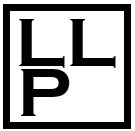Guest Post: My Ideal Library, by Kyle Cassidy
When I close my eyes and try to imagine my ideal library – it’s very clear in my head – a warren of stacks and stairs and turrets and tiny windows overlooking empty forests. It’s dark and tight and there are places to sit comfortably, to recline, to read and not see another human being. I imagine that wherever I am it’s four or so floors down to the front desk where the librarian sits, filing things and pounding on books with a large rubber stamp and pressing cards into a date stamping machine that makes a satisfying onomatopoeiaic sound like a bag of lead ingots falling to the floor.
I imagine that there is a cat in the library and when you say to the librarian “There is a cat in this library!” the librarian looks back at you with disdain and says “Friend, there are seven cats in this library.” And then goes back to stamping books without another glance.
And – while I have this so crisply pictured in my mind, there are no new books – nothing with a garish spine or cheap cover – they’re all earth tones with carefully embossed gold titles, and most likely, if you pulled them from the shelves, some grand ornamentation. There are no books on trendy topics.
If you wander far enough, possibly in pursuit of one of the cats, you may stumble into the map room – filled with enormous atlases – all old and many of places that you’ve never heard of and most of which probably haven’t been looked at for a hundred years. There is a lot of dust.
And in this daydream of mine where I imagine myself in the ideal library, my perfect space, and realize that in all these visions I’m never really accomplishing anything in there – this library is only good for finding coded letters stuffed between pages, palimpsests that lead to lost treasures and forgotten diaries that incriminate kings – and when I think about libraries that I use and the ways in which I use them it’s completely different.
The things I use in libraries all the time are expensive pieces of equipment that I have only an occasional need for, like movie cameras, microphones, lenses, or cake pans shaped like human skulls.
The things I use are spaces like the virtual reality room, the podcasting studio, the meeting room with the whiteboard, gigantic television and teleconferencing microphones.
The things I use the library for the most are the audiobooks that I get with the Libby app, or with Hoopla. I take out a book every two days – but I do it from my phone without ever getting out of bed. I use Kanopy to watch documentaries, I use the library’s subscriptions to Lexis Nexis and newspapers. I use its Wall Street Journal subscription, which allows me to read articles linked on Facebook that other people get turned away from because of the paywall.
The Internet doesn’t replace a library, a library enables the Internet, it brings access to online resources. It lowers the step to access. It gives everyone the option to be a moviemaker, a podcaster, a writer, a photographer, a scholar, an historian.
Sure libraries have books and cats and will continue to have books and cats, but the way we interact with information has changed and each step of the way I’ve found that my library was there first, before I ever knew what I was going to need. That’s ideal.
Kyle Cassidy is an award winning photojournalist whose work has appeared in The New York Times, Vanity Fair, Interview, the Los Angeles Times, Bust, Fangoria and others. He is the author of the bestselling photo book “This is What a Librarian Looks Like: A Celebration of Libraries, Communities, and Access to Information” which includes essays from Neil Gaiman, George R. R. Martin, Nancy Pearl, Amanda Palmer, Jeff Vandermeer and others. He’s spent a lot of time in libraries. You can find him on twitter and Instagram at @kylecassidy and at kylecassidy.com for everything else.

